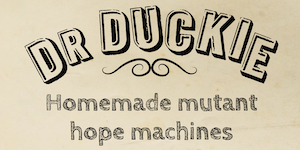Solemnity is the default tenor of academic research presentations but it is not cabaret’s friend. One of cabaret’s defining characteristics, after all, is that it’s meant to be fun: maybe comic, maybe titillating, maybe gasp-inducing; certainly not dour. So when Mat Fraser was commissioned by the Research Centre for Museums and Galleries to look into the history of how disability has been presented in a museum context, his instinct was to present the fruits of his research as a bit of a laugh.
“I had grand designs about it being a hysterical comedy cabaret,” he said by way of introduction at the premiere of Cabinet of Curiosities: How Disability Was Kept in a Box at the Royal College of Physicians on January 20. “But as I looked deeper into it… Well, I don’t know how to put it other than I didn’t find it very funny.”
It’s to Fraser’s great credit that the resulting presentation is, in fact, very entertaining even as it conveys with great power the more misguided, outrageous and degrading aspects of this particular history.
And it was surely part of his brief to make the subject more engaging than the average piece of archive research. Fraser is, after all, a terrific performer known for his provocative, outrageous and stimulatingly progressive takes on everything from the history of freak shows to classical fairy tales. The performative use he has made of his own short arms – his mother took Thalidomide during pregnancy – is only one aspect of a career that has taken him from disability activism to Coney Island, Bethnal Green Working Men’s Club to the closing ceremony of the London Olympics. And solemn he ain’t.
A wide-ranging, hyrbid career, then. And Cabinet of Curiosities is a wide-ranging, hybrid undertaking. It’s mostly a talk but also involves artefacts, photos, videos and songs. It’s a lecture that draws on decades of disability theory and the holdings of various institutions (including funders the Wellcome Trust and the Smithsonian in the US) but also an impassioned personal exhortation. It will open your mind and wrench at your heart as well as raising a chuckle and a gasp or two.
The main thrust of Fraser’s argument shouldn’t in itself be revelatory to anyone who’s down with the idea that disabled people are people first and disabled second. Yet he leaves no room for doubt that this idea has too often – indeed almost always – been neglected in favour of approaches that effectively objectified disabled people, whether as freaks, victims, problems to be solved or just ever so, ever so brave, bless them.
Such approaches, of course, ignore disabled people’s essential subjectivity – the fact that their experiences and agency are no less validly human than anyone else’s. Fraser’s critique is founded on the assertion that objects – whether artefacts displayed in museum cabinets or people reduced to vehicles for their disability – tell only a fraction of the story.
He draws on evidence like photos of sideshow performers showing their professional clout; charity posters that make wheelchair users appear “stranded”; recent photographic work emphasising disabled people’s personalities; and his own anecdotal experience. His expressive tools include videos made with cabaret performers (a music-hall pastiche, Belittle the Cripple, featuring Christopher Green, Michael Roulston, Champagne Charlie, Sarah-Louise Young and Des O’Connor) as well as gags and even a touch of hip-hop (yes, he admits, “I’m 51, I’m disabled, I’m white, I’m middle-class and I was just rapping about museums…”).
The presentation’s most intensely emotional material comes at its conclusion, which will leave few eyes unpricked. I don’t want to give too much away in case you see Cabinet of Curiosities yourself, which I urge you to do. But as well as finding Fraser himself in powerful voice, the closing minutes combine archive footage with a recent audio interview in a way that elucidates with heartbreaking clarity the difference between being an object and being a subject.
It’s a compelling reminder of the fact that meaning – the meaning of disability, the meaning of people’s experience – is always up for grabs. Fraser’s message is that institutions involved in communicating the experience of disability to the public at large, including those backing his research, are to be praised for wanting to find new ways of doing justice to the subject, but also held to account for past failings. “Let’s help them but let’s not let them off the hook,” as he puts it.
Mat Fraser presents Cabinet of Curiosities: How Disability Was Kept in a Box at the Science Museum on January 31 and the Hunterian Museum on February 5.
UPDATE: Read an interview with Mat Fraser about his work on American Horror Story: Freak Show here.


